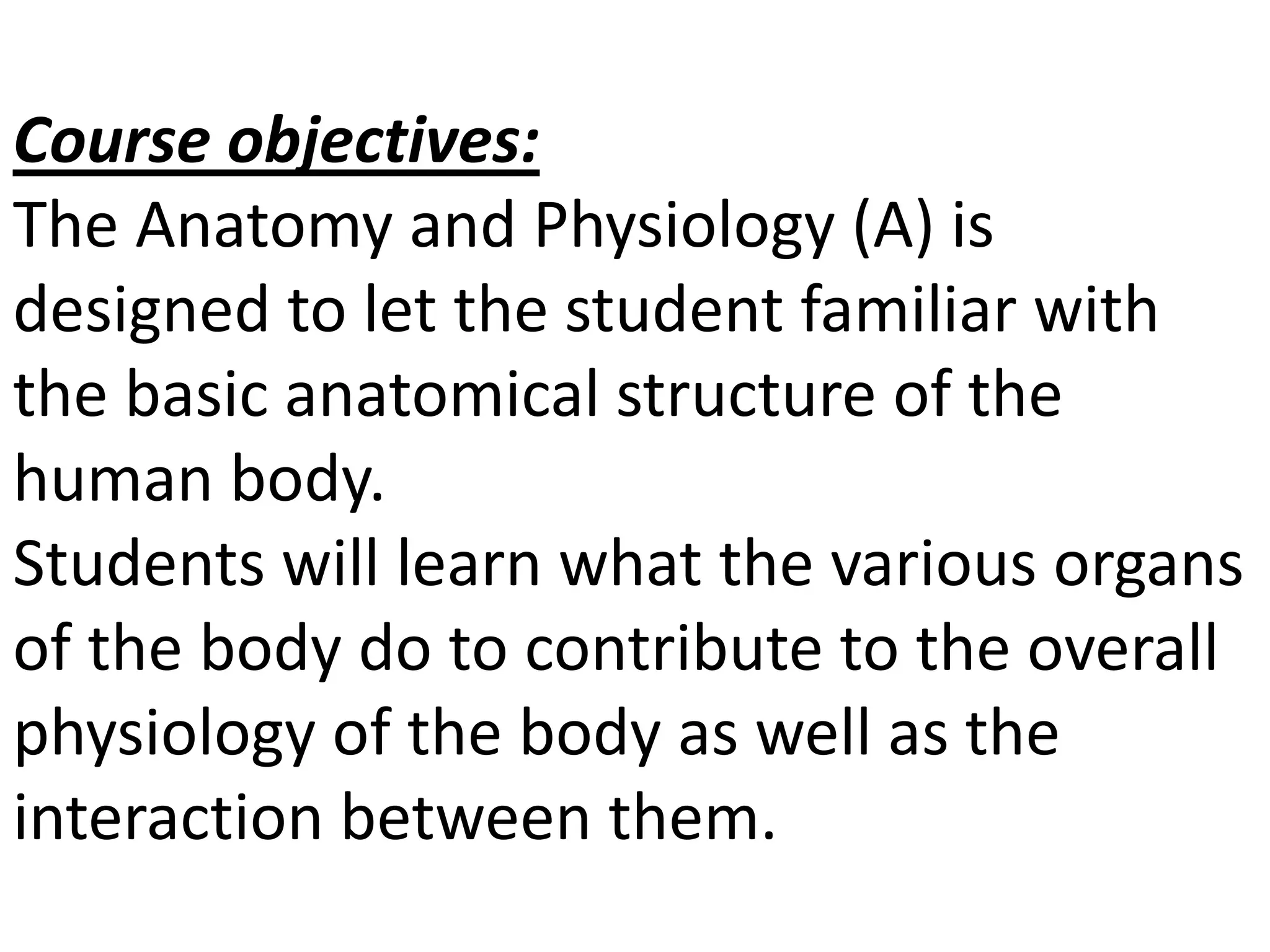This document provides an overview of a course on human anatomy and physiology for medical students. The course introduces students to the concepts of anatomy and physiology and how the body is organized from the chemical to organism levels. It describes the main objectives of the course as helping students learn the basic anatomical structures of the body and understand how the organs function and interact with each other. The course also aims to equip students with knowledge of anatomy and physiology to assist them in understanding health issues.














